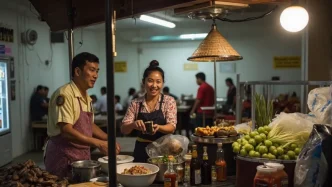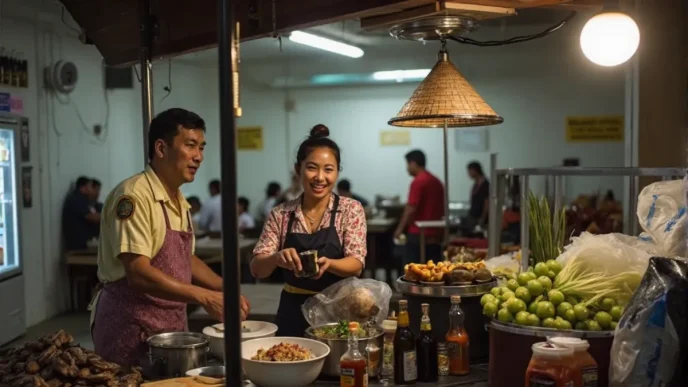On March 28, 2025, Myanmar experienced one of the deadliest earthquakes in its modern history, a 7.7-magnitude event centered in the Sagaing region that claimed over 3,000 lives. The disaster’s reach extended far beyond Myanmar’s borders, with tremors felt as far as Hanoi, over 2,000 kilometers away, and Bangkok, where a skyscraper under construction collapsed. As rescue efforts continue in cities like Mandalay, where buildings lie in ruins, questions emerge about the broader implications of such seismic events for South East Asia, including Singapore, often considered a safe haven from natural disasters.
The Sagaing Fault: A Deadly Convergence
The March 28 earthquake originated from the Sagaing fault, a major geological fracture stretching 1,400 kilometers through Myanmar from north to south. This fault lies at the intersection of four tectonic plates—the Eurasian, Indian, Sunda, and Burma microplate—making the region particularly prone to seismic activity. Experts attribute the disaster to a strike-slip movement, where the Indian and Sunda plates slid horizontally past each other, unleashing powerful seismic waves.
Associate Professor Wei Shengji from the Asian School of Environment at Nanyang Technological University (NTU) in Singapore explained that the magnitude of the event generated waves capable of traveling vast distances. “The size of the earthquake meant that its energy could propagate far beyond the epicenter” he said. This phenomenon was evident in Bangkok, over 1,000 kilometers away, where the soft soils of the Chao Phraya delta amplified the shaking, contributing to the collapse of a high-rise under construction.
Bangkok’s Vulnerability: A Warning Sign
The impact in Bangkok underscores the region’s susceptibility to distant earthquakes. The city’s location on a sedimentary basin intensified the tremors, as soft soils tend to amplify seismic waves compared to harder bedrock. Professor Wei noted that buildings in such areas are at greater risk if the frequency of the tremors matches the structure’s natural resonance frequency—a phenomenon that can dramatically increase shaking within a building.
Viral footage from Bangkok captured water from rooftop pools spilling over the edges of skyscrapers during the quake, sparking online speculation that such pools could act as damping systems to absorb vibrations. However, Professor Ivan Au from NTU’s School of Civil and Environmental Engineering cautioned that this effect is negligible unless the pools are specifically engineered as tuned liquid dampers. “Without a design to match the building’s resonance frequency and dissipate energy, the reduction in vibration is minimal” he said.
The incident in Bangkok serves as a stark reminder of how urban centers in South East Asia, even those distant from fault lines, can suffer catastrophic consequences from earthquakes. The collapse of the skyscraper, though specifics on casualties remain unclear pending official reports, highlights the need for stringent building codes and seismic-resistant designs in regions with soft soil foundations.
Engineering Resilience: Lessons from Taipei 101
Designing buildings to withstand earthquakes requires accounting for horizontal vibrations in addition to vertical gravity loads, a principle that becomes critical in seismic zones. Professor Au emphasized that structural elements like columns, beams, and joints must possess higher load-carrying capacities and ductility—allowing them to deform without breaking. In some cases, this necessitates innovative structural forms, such as diagonal braces or damping devices, to mitigate vibrations.
A prominent example of such innovation is Taipei 101, a 101-storey skyscraper in Taiwan, which incorporates a 660-tonne steel pendulum as a tuned mass damper. This mechanism counteracts the building’s sway during earthquakes and high winds, providing a model for other high-rises in earthquake-prone regions. Professor Au also pointed out the importance of soil conditions, noting that seismic waves can be amplified as they travel from bedrock to a building’s foundation. In extreme cases, violent shaking can trigger soil liquefaction, a process where soil temporarily loses strength, leading to ground failure and severe structural damage.
While Myanmar and parts of Thailand face direct risks from tectonic activity, the question remains: how safe is Singapore, a city-state often perceived as insulated from such natural disasters?
Singapore’s Seismic Risk: A Closer Look
Singapore, located far from major fault lines, is generally considered low-risk for earthquakes. However, experts warn that this perception may be overly optimistic given the lack of comprehensive data on local seismic activity. Professor Wei highlighted that large earthquakes in low-activity regions can have recurrence intervals of thousands or even tens of thousands of years, making it difficult to assess risks without long-term geological and seismic datasets. “There is simply not enough research to fully evaluate Singapore’s exposure” he said.
The proximity of the Sumatran fault—a 1,900-kilometer strike-slip fault running the length of Sumatra, only 400 kilometers from Singapore—adds to the concern. Similar in nature to the Sagaing fault responsible for the Myanmar quake, the Sumatran fault could potentially generate seismic waves capable of reaching the Republic. The events in Bangkok, where tremors from over 1,000 kilometers away caused significant damage, suggest that Singapore’s risk assessment must extend beyond its immediate surroundings.
Fortunately, Singapore has taken steps to address potential seismic impacts. Professor Au noted that although the city is not typically seen as earthquake-prone, building designs incorporate considerations for such events. The country’s National Annex, aligned with the European design code (Eurocode), includes provisions for earthquake resistance tailored to local conditions. This framework ensures that structures are equipped to handle minor tremors, though the effectiveness against a major distant quake remains untested.
Regional Implications and Future Preparedness
The March 28 earthquake in Myanmar is a sobering reminder of South East Asia’s vulnerability to natural disasters, even in areas far from the epicenter. For Myanmar, the immediate focus remains on rescue and recovery, with international aid trickling into affected areas like Mandalay. The death toll, already exceeding 3,000, may rise as more remote regions are assessed. Meanwhile, the secondary effects—felt in Hanoi and Bangkok—demonstrate the interconnected nature of seismic risks in the region.
For Singapore, the disaster prompts a reevaluation of preparedness. While the city-state benefits from robust engineering standards, the lack of extensive seismic data and the proximity of major faults like Sumatra’s suggest that complacency is ill-advised. Urban planners and engineers may need to prioritize research into long-term seismic risks and consider retrofitting older buildings to enhance resilience.
Beyond infrastructure, public awareness plays a critical role. The viral videos from Bangkok, while alarming, offer an opportunity to educate communities about earthquake safety and the importance of structural design. Governments across the region, including Singapore, could use this moment to strengthen regional cooperation on disaster response, sharing expertise and resources to mitigate future impacts.
As South East Asia grapples with the aftermath of the Myanmar earthquake, the event serves as a call to action. From Mandalay’s rubble to Bangkok’s shaken skyline, the tremors of March 28 ripple through the region, urging a collective focus on resilience and readiness for the unpredictable forces beneath our feet.














